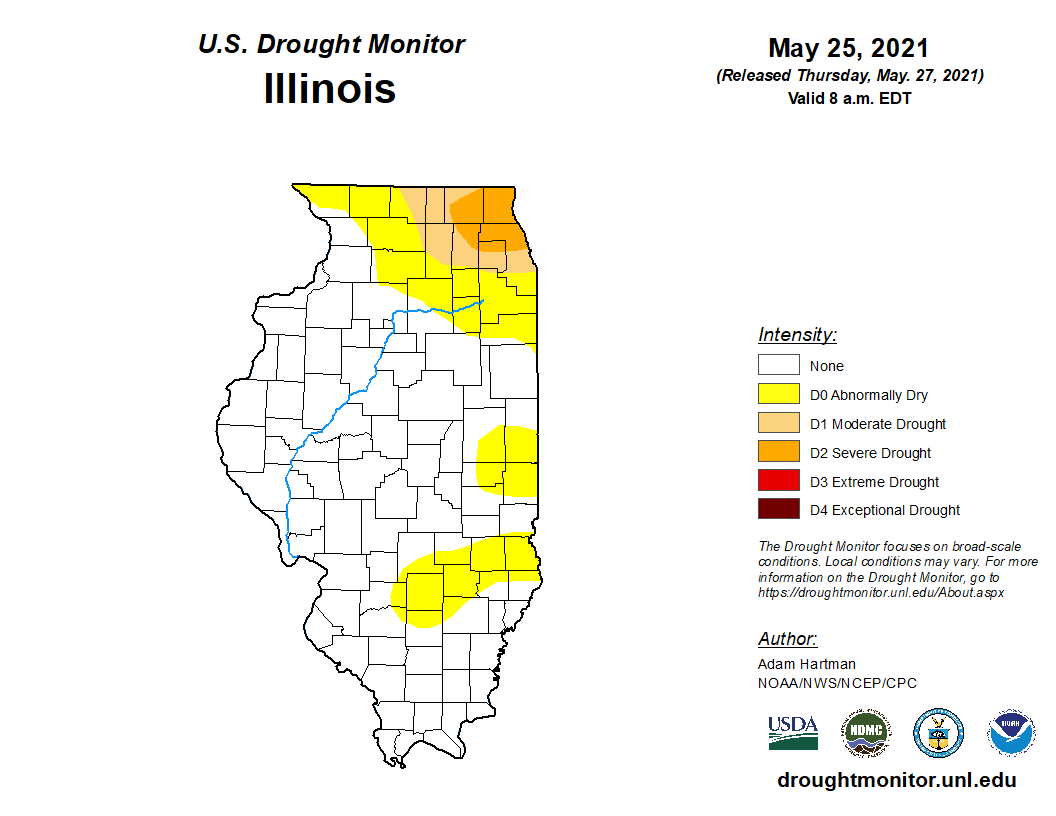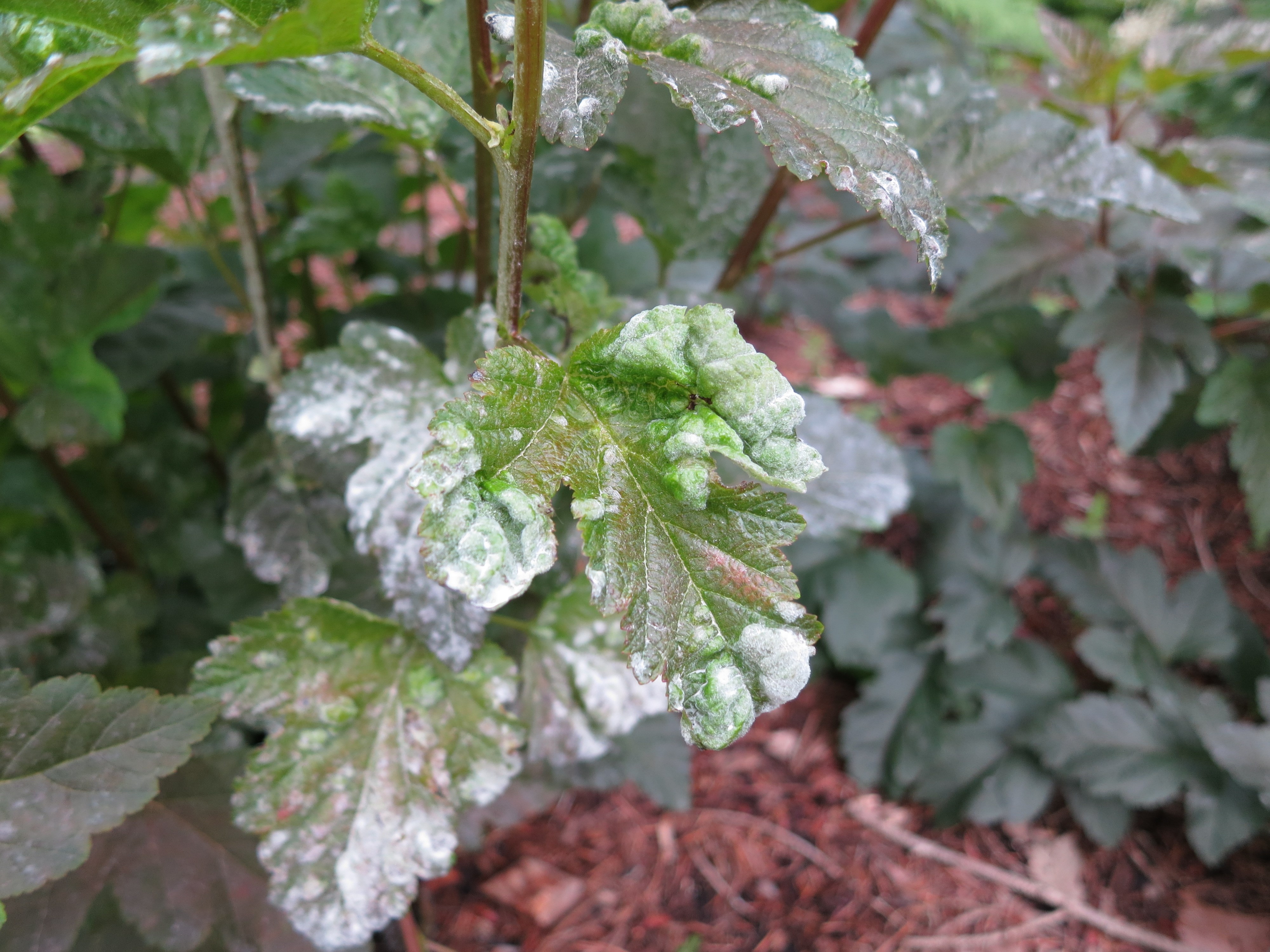Issue 4, June 1, 2021
Powdery Mildew on Common Ninebark
Many view dry conditions as being unfavorable for fungal pathogens. While this is often true, some fungal diseases, such as powdery mildew, thrive under dry, humid weather. The most recent U.S. Drought Monitor has roughly a quarter of Illinois categorized as abnormally dry to severe drought. The northeast counties are under the latter.

The dry conditions have led to powdery mildew infections on common ninebark (Physocarpos opulifolius). Powdery mildew diseases are among the easiest to diagnose in the landscape, causing distinct white, superficial powdery growths on leaves, stems, and flowers. These signs tend to stand out and are more noticeable on ninebark cultivars with purple leaves. Powdery mildew infections will initially appear as small, white patches. These patches will continue to expand over the summer, eventually covering the entire leaf surface. Dwarfing and distortion of the leaves are not uncommon. Heavily colonized leaves may prematurely defoliate. Fortunately, this tough, adaptable species tolerates powdery mildew infections without any lasting injury, aside from some aesthetic loss.

Photo 1 Initial, small patches of powdery mildew on common ninebark

Photo 2 Common ninebark leaves entirely covered with powdery mildew

Photo 3 Common ninebark with powdery mildew and distorted leaves.
Most powdery mildew fungi are host-specific. You don’t need to worry about powdery mildew on ninebark (Podosphaera aphanis var. physocarpi) spreading to other plant species in the landscape. Your first control practices should focus on cultural strategies. Grow resistant cultivars when possible. LAYERS OF INTRIGUE: PHYSOCARPUS AND POWDERY MILDEW summarizes a study that evaluated popular ninebark selections for their relative resistance and susceptibility to powdery mildew infections. Place new ninebark plants in sunny locations with good air movement. Dense, shady, or damp areas tend to favor disease development. Prune plants to remove any severely diseased branches plants and to promote good air circulation.
Powdery mildew on ninebark does not usually warrant the use of fungicides. When justified, the following products may offer protection against this disease: Copper Sulfate Pentahydrate (Phyton 35), myclobutanil (Myclobutanil 20 EW T&O), potassium bicarbonate (Milstop SP), tebuconazole (Torque), Triadimefon (Armada), Triflozystrobin and Triadimefon (Trigo).
*Trade names have been provided for reference, but their use does not constitute an endorsement by the University of Illinois, nor does it imply discrimination against other products.
Author:
Travis Cleveland